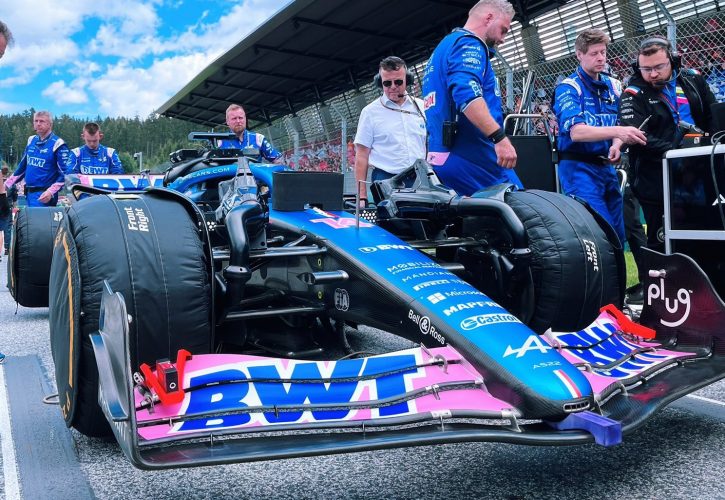
Alpine has traced the cause of the sudden electrical black-out that sidelined Fernando Alonso from last weekend's Austrian Grand Prix sprint event.
Alonso had qualified P8 for Saturday's 23-lap sprint, however the Spaniard's A522 shut down on the grid ahead of the formation.
The team was forced to roll Alonso back into the pits and retire the car as it could not be fired back up.
The Enstone squad initially suspected a failure of the car's standard ECU, a component used by all teams. But a through investigation back at Alpine's base revealed that a power supply issue to the ECU rather than the unit itself was to blame.
"At that point in time, we thought it was an ECU failure," Alpine team boss Otmar Szafnauer told Motorsport.com.
"We took it back to the factory, and we were able to replicate the problem.
"And it wasn't the ECU. It's a box that powers the ECU. And so the ECU was fine, but the power box that powers the ECU wasn't fine. And if you don't power it, it looks like the ECU is dead.
"All indications were that the ECU had failed, but we didn't know then that the power box wasn't working. And it’s an Alpine part."
Alpine's analysis of its recent reliability issues also identified the cause of the fuel pump failure that forced Esteban Ocon into retirement on lap 37 of the British Grand Prix at Silverstone.
The problem, which also manifested itself after Ocon had crossed the checkered flag in the sprint race at the Red Bull Ring, was caused by the standard high-pressure pump that is supplied to teams by Bosch.

"The issue on the fuel pump is that we had a couple of early failures on the dyno," said Szafnauer.
"Therefore, we tried to fix those problems ourselves, as the Bosch standard issue wasn't working in an F1 installation, because it's a road car part.
"Several teams had this problem, and us and Ferrari got dispensation from the FIA to do our own fixes. Therefore we went our own route to fix the Bosch problem.
"And our own fix worked fine for the first nine races. We had no problems on the dyno, or on the track. Then something happened, probably we saw some different types of loadings for whatever reason. And they started to fail.
"Bosch also improved from the beginning, they’ve made changes to improve the electrical connection. So some of the teams used the Bosch improvement, and two of the teams used their own improvement.
"We're working on a new fix ourselves for France, and at the same time exploring what Bosch have recently done to fix their initial problem."
Keep up to date with all the F1 news via Facebook and Twitter






